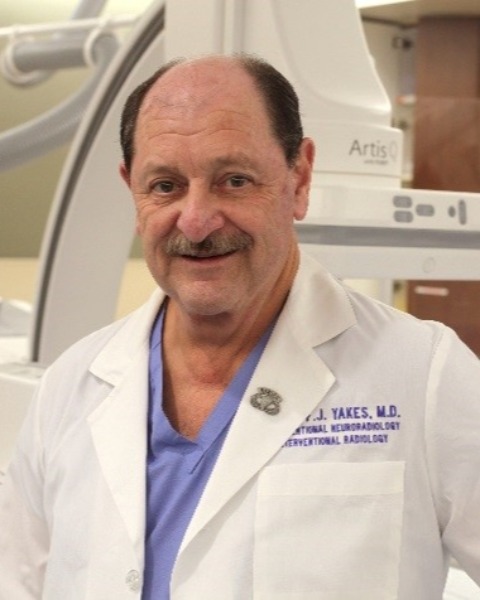SIR 2025
Embolization
Scientific Session
Ethanol Direct Puncture Sclerotherapy of Tongue Low-Flow Venous Malformations: Report of Long-Term Ablations

Wayne F. Yakes, MD, FSIR, FCIRSE (he/him/his)
Medical Director
The Yakes Vascular Malformation Center, United States
Presenting Author(s)
Materials and Methods:
48 patients (29 females, 19 males; mean age: 38 years) presented with tongue low-flow malformations. 47 patients had undergone 61 failed previous procedures (embo, laser, surgery, steroid injection, alpha-interpheron, radiation). All patients had baseline arteriograms and MRs. All patients underwent direct puncture ethanol endovascular therapy to complete ablation.
Results: Of 48 patients with venous and lymphatic malformations, 42 patients had dramatic reduction and 9 patients' therapy is on-going with progressive reductions (mean f/up: 39 months). 1 patient with AVM required additional surgery and 1 patient with mixed veno-lymphatic malformation required surgical debulking of excess tongue tissues. Minor complications such as tongue blisters (9 instances) healed spontaneously; 3 tongue focal areas of necrosis healed spontaneously; 3 infections responded to antibiotic treatment; 1 focal tongue hemi-numbness resolved. 1 patient had a lateral portion of the tongue slough and the tongue healed and remodeled with no treatment required.
Conclusion:
: Ethanol embolotherapy is a primary and consistent form of therapy to eradicate low-flow vascular malformations of the tongue permanently at long-term MR follow-up. Rarely is concurrent surgery required. Ethanol sclerotherapy is a curative treatment in which recurrences do not occur and permanent ablations appear to be the rule. Complications are usually managed conservatively.


.jpg)